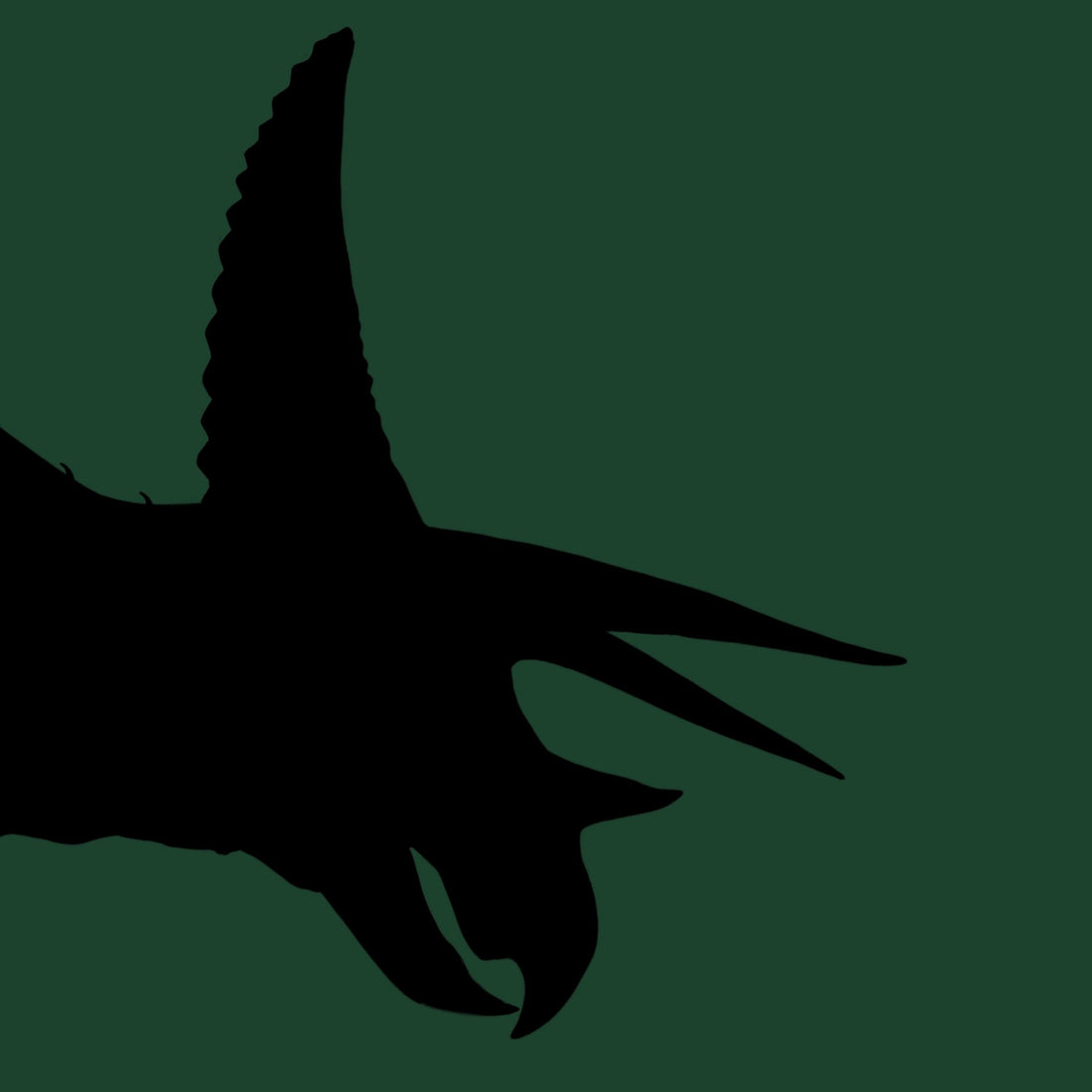Triceratops was one of the largest ceratopsian dinosaurs. It had four stout legs, a large body, and a massive skull with two huge horns over its eyes and one large horn over the top of the nose, thus why it was named “three horned face”. It lived at the very end of the time of the dinosaurs, alongside the king of the dinosaurs, Tyrannosaurus rex, Pachycephalosaurus, and Edmontosaurus. At 30’ long and over 13 tons in weight a full-sized Triceratops could give even the largest T. rex pause!
Triceratops was a planteater that used its powerful beak to snip off vegetation, then with its tongue moved the food backward where hundreds of teeth went to work to crush the food. The teeth formed a “dental battery”, a condition where columns of teeth (up to 5 teeth in a column) are so tightly packed together that they form a “wall” of teeth with no gaps. The Triceratops “chewed” (reptiles don’t chew as mammals do) by moving its jaws back and forth, with the dental battery grinding up the food between the walls of teeth. This grinding meant even the toughest cycads and ferns could be eaten, plants that other animals tended not to consume because of how fibrous and tough they are.
Triceratops had what is called a double root on the base of its teeth as you can see from the tooth in the crate. The double root allowed the teeth to withstand tremendous jaw pressures while grinding back and forth against tough plant material. The double root also created a nook for the tooth underneath it, making it easier to push the one above out of the way so as to always have sharp teeth. Triceratops had up to 800 individual teeth in its mouth at any given time, but less than 200 actually interacted with food, the rest were growing, ready to take the place of the ones above.
Triceratops is one of the best-known dinosaurs thanks to the discovery of skeletons of babies, ancient individuals, and all sizes in between. As many as 500 skulls of Triceratops have been discovered! With so many fantastic skulls and skeletons, it is no wonder that 17 species and a number of genera have been applied to Triceratops over the last 120 years. Today, only 2 species, Triceratops prorsus and Triceratops horridus are recognized as valid. These two species didn’t coexist, rather they lived at different times in the same region, with T. prorsus evolving from T. horridus. All of the other named species are considered to belong to one of these two species, the differences originally used to justify a new genus of dinosaur are now known to be because of differences between males and females, as well as the changes from juvenile to adult, and to how the skulls were preserved (many were crushed flat or distorted over the last 66 million years).
Triceratops had many encounters with Tyrannosaurus based on the fossil record. There are examples of Triceratops with broken horns and damaged frills that healed and Tyrannosaurus with what may be stab wounds from Triceratops horns. One of the Fossil Crates team (Jacob) excavated a Triceratops that showed signs of having been savagely attacked by a Tyrannosaurus in its hip region but survived for a few months. Jacob says, “It would have been more merciful if it had died, it lingered on with a massive infection that must have hurt badly and smelled awful, attracting insects and predators. Mercifully it finally died and was scavenged by all manner of predators.”
Triceratops is the state dinosaur of Wyoming and the state fossil of South Dakota. It is one of the most popular dinosaurs and deservedly so, anything that is 3 times as long and 13 times as heavy as a rhino deserves love!
Watch additional information about Triceratops here.
Purchase a Triceratops Scaled Skull here!

